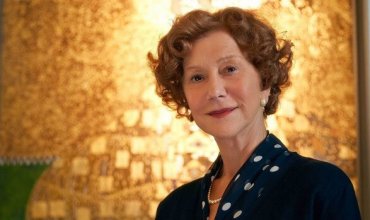Daniel Radcliffe a.k.a Harry Potter takes it down a notch going from worldwide blockbuster franchise to small, limited release British horror flick.
Based on the novel of the same name, The Woman in Black is set in Edwardian England. Young widower and solicitor Arthur Kipps (Daniel Radcliffe) lives with his four-year-old son. Haunted by the loss of his wife during childbirth, Kipps’ professional and personal life is suffering.
As a last ditch effort to save his career, Kipps obeys a summons to Crythin Gillford, a somewhat morbid and spooky market town, to settle the estate of the late Alice Drablow who owns an even more morbid and spooky English manor known as the Eel Marsh House.
It is here Kipps encounters the ghost of the Woman in Black, discovering the town’s horrific secret surrounding the repeated deaths of the local children.
Sounds lovely right?
I was first exposed to The Woman In Black when I saw the London West End stage play. The second longest running play after Agatha Christie’s The Mouse Trap, the play had the audience jumping and screaming. I was curious to see if the film would generate a similar chill.
Director James Watkins takes us back to tradition thrillers toning down the blood and gore and upping the suspense, expertly wielding shadows and empty spaces to create an escalating sense of dread.
All the golden oldie techniques get a go: the unexpected move of a shadow in the background, the sudden appearance of creepy faces, the house creaking and doors swinging open of their own accord – all that kind of predictable but still spine-chilling stuff.
The old fashioned, ornate and slightly gothic aesthetic to the film serves the story well, imbedding the film in realism despite it’s ‘other worldly’ qualities.
The music slots in with the traditional feel, adding sometimes subtle yet sometimes over dramatic tones that ultimately succeed at enhancing the drama.
Radcliffe takes his usual approach of subtle, down-played characterisation and though this serves well at making his characters believable, he could have stepped it up a notch on this one and flexed his dramatic muscles a little more. He does, however, do a good job at playing an adult after years of playing a bespectacled teen. The relationship between his character and his son is heart-felt and genuine, and gives the film a strong emotional foundation (though this is probably owing to the fact that the four-year-old son is played by Radcliffe’s real-life Godson rather than due to acting prowess).
Like most horrors there are flaws (why don’t the people with children in the town just move away?!), and the end will leave some disappointed (as, no doubt, will the lack of blood for many others) but ultimately this is a nicely made flick worthy of box office recognition. Watkins’ bold move to draw from old-fashioned horror flicks rather than conform to modern stereotypes of a blood and guts fest is admirable.
I rate it 7 stars.


